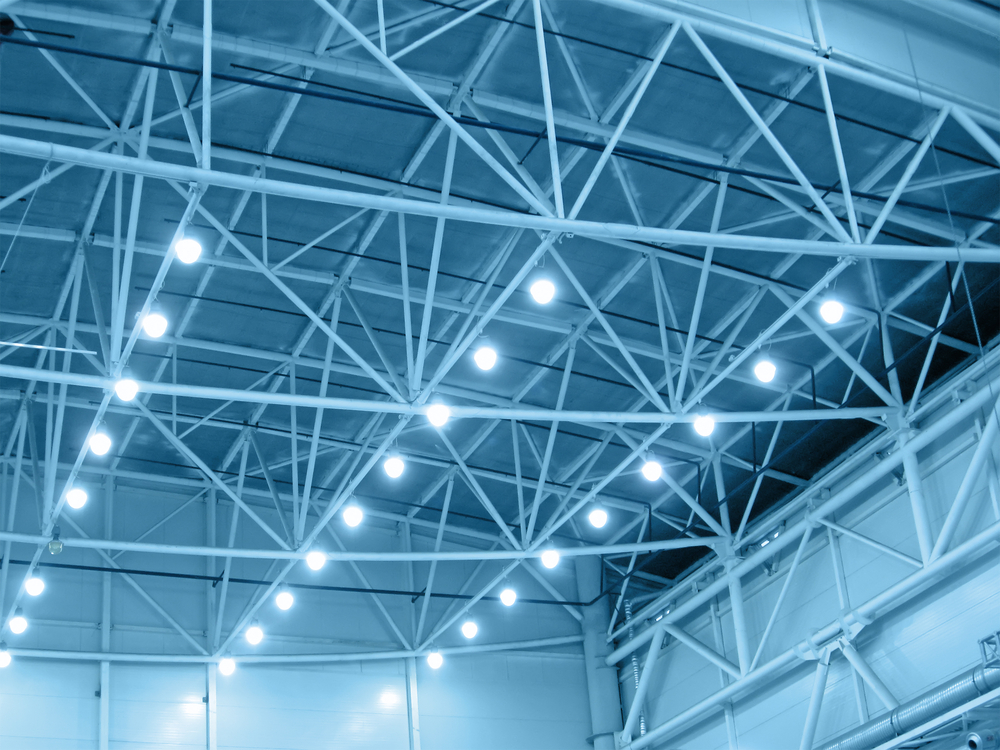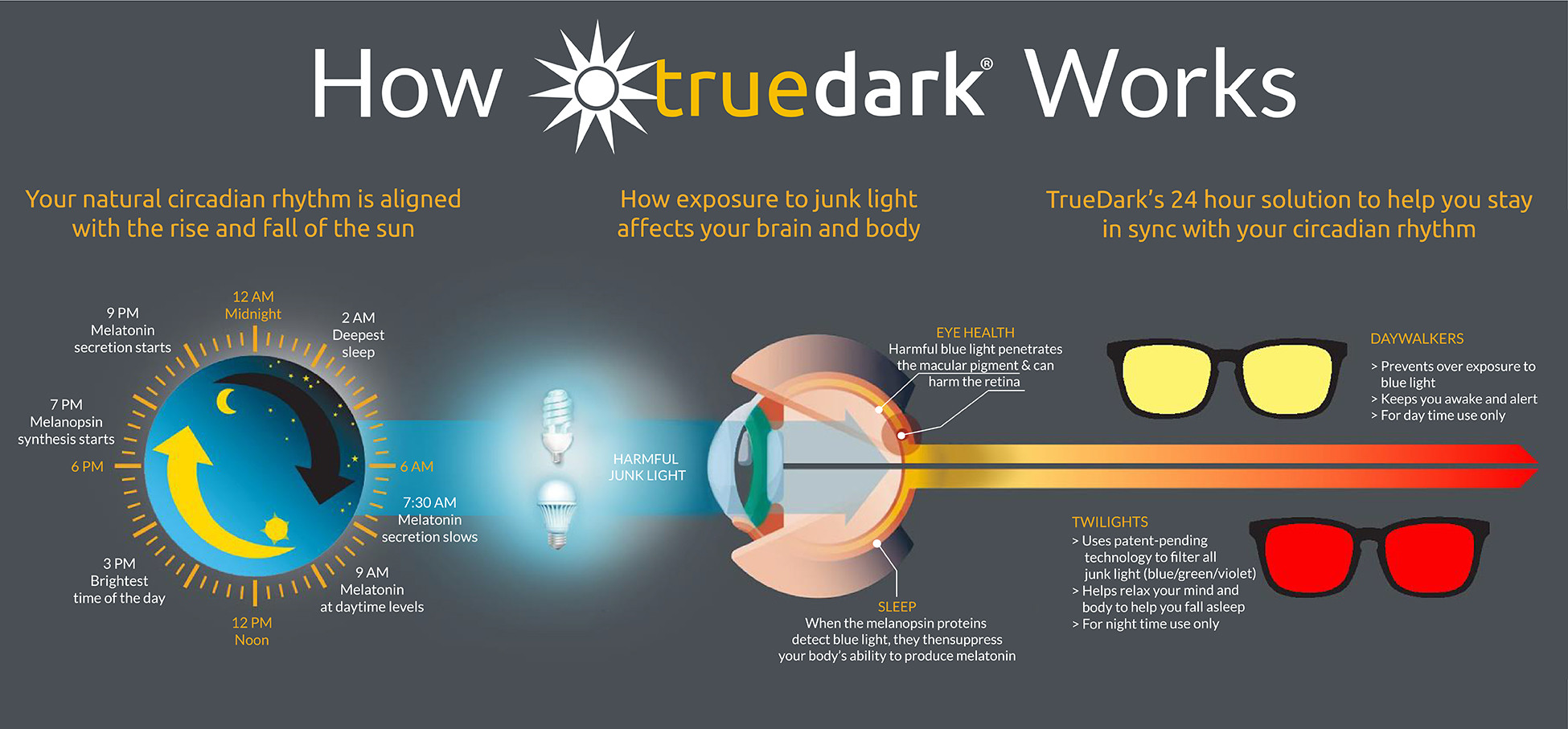
Spending hours behind a computer and under the glare of LEDs is a fact of modern life for most working people. Another sad fact is that overexposure to blue light, or “junk light,” can have dire consequences for sleep patterns, eye health, and overall disease risk. There are proven things you can do to protect yourself, however. Specialized glasses that put a barrier between you and “junk light” are one of them.
What (and Where) Is Blue Light?
Blue light rays are amongst the shortest of all the wavelengths, and thus have the highest energy. Another name for blue light is UV radiation.
Of course, as long as the sun has been beating down on us, we have been exposed to blue light or UV. In modern times, this exposure has increased exponentially. Television screens, cellphones, tablets, laptops, energy-efficient light bulbs, overhead office lights, and even streetlights—can all be sources of blue light. Artifically-produced blue light is known as “junk light.”
While electronic devices are the major source of blue light, over the last decade or so, more public areas, office buildings, and homes have been outfitted with cost-effective LED lights as well. You probably know that fluorescent lights are bad news. But did you know that LEDs emit more blue light than fluorescent bulbs do?
Studies on Blue Light Risks
Ongoing exposure to “junk light” (i.e. artificially produced blue light) at the wrong times during the day and evening can cause headaches, eye strain, and poor sleep, including insomnia. But that is not all. Overexposure can also lead to higher Breast Cancer risk.
Dozens of studies to date have drawn correlations between blue light exposure and certain cancers. One such study was conducted by researchers at the Barcelona Institute for Global Health (ISGlobal) in 2018. They found that long-term blue light exposure raised the risk of both breast and prostate cancer.
Blue Light at Night

Some natural blue light is actually beneficial during daylight hours. During the day, this wavelength lifts mood and cognition and helps a person stay awake and “alert.” When we are exposed to too much blue light from artificial sources during the day, or if are exposed to blue light for long periods at night, this is when major problems may arise.
Most studies make the connection between blue light and cancer through how this kind of light disrupts our circadian rhythms and melatonin production. Adequate melatonin production helps to ensure estrogen balance and can even suppress Breast Cancer cell growth.
On the other hand, low melatonin increases Breast Cancer risk. The link between women who experienced ongoing sleep disturbance and higher rates of Breast Cancer was established in the 1990’s. And the connection between high cortisol levels, low melatonin production, and Breast Cancer has been known for years.
Blue Light and the Eyes
Junk light is especially hard on the eyes for a couple of reasons. First of all, sources such as LED-powered streetlights and overhead office lights produce excessive glare compared to yellow or red light. It is also harder for the eyes to focus on blue light as opposed to other colors. These two factors raise the risk of eye strain in general, as well as accidents on the road (because of overhead LED lights).
It is direct damage to the retina, however, that is the gravest concern for the eyes when it comes to blue light overexposure. Shortwave frequencies such as those coming from blue light go right to the back of the eye, penetrating the retina and damaging cells.
Macular degeneration (or AMD, i.e. the loss of central vision) is one of the consequences of blue light exposure. An estimated 196 million individuals will be diagnosed with AMD in 2020.
If these rates continue on, that number is expected to jump to 288 million by 2040. Experts state that one of the main reasons for the connection is UV exposure from “blue-light emitting technologies.”
Ways to Protect Yourself from UV Light
The most obvious way to protect yourself from the consequences of UV light is to limit your exposure, especially at night. You can do this in simple ways, such as choosing to turn off the TV and the computer a few hours before bed and switching to soft, yellow, non-LED lights in your home. For the vast majority of working adults, however, ongoing, daily blue light exposure is just a fact of life.
Thank goodness that there are technologies available to counter this! The most effective technology comes in the form of specialized amber glasses specifically designed to block “junk” light. Blue light-blocking glasses can filter blue light yet still allow you to see the screen and function within an LED-lighted setting. And according to a growing body of research, these types of glasses really work.
A 2010 study published in the International Journal of Endocrinology took a look at how both blue light and red light exposure affected the endocrine and autonomic nervous system. The end result was that ongoing exposure to red light had no effect on these systems. Blue light exposure, however, had a significant effect on both cortisol and melatonin levels.
In addition, a University of Toronto study compared melatonin levels of individuals wearing junk light-blocking goggles in bright blue light environments to those exposed to regular “yellow” light (non-LED). The hormone levels in the two groups were the same.
My Recommendation: True Dark Eyewear
The company I recommend for the highest quality blue light-filtering amber eyewear is True Dark (the picture of me with the red glasses is the kind that fits over prescription glasses… a little big but they get the job done LOL).
True Dark has years of experience behind them. They also have several styles in their stock for everything from “fit-overs”(that fit over regular prescription glasses) to daytime/nighttime wear to glasses for children. They also have the backing of many experts and countless customers who claim they experience better sleep and experience relief from eye strain as a result of using True Dark glasses.
Sometimes it is the “unseen toxins” that are the most harmful. This is definitely the case with blue light, but the good news is there is a proven solution to “cut the junk” and start healing again. No matter what you do to lower your exposure to blue light, it is vital that you do so as part of your overall Healthy Breast journey.
